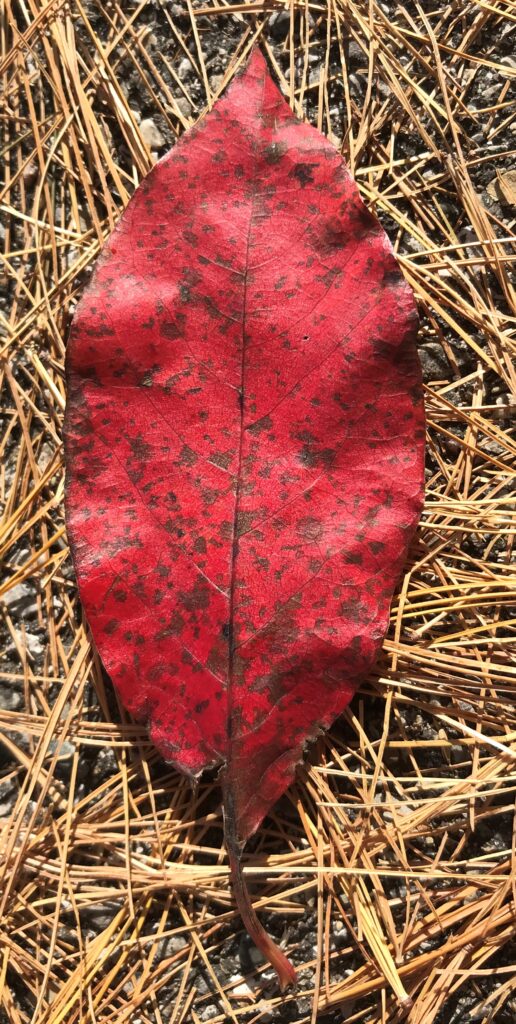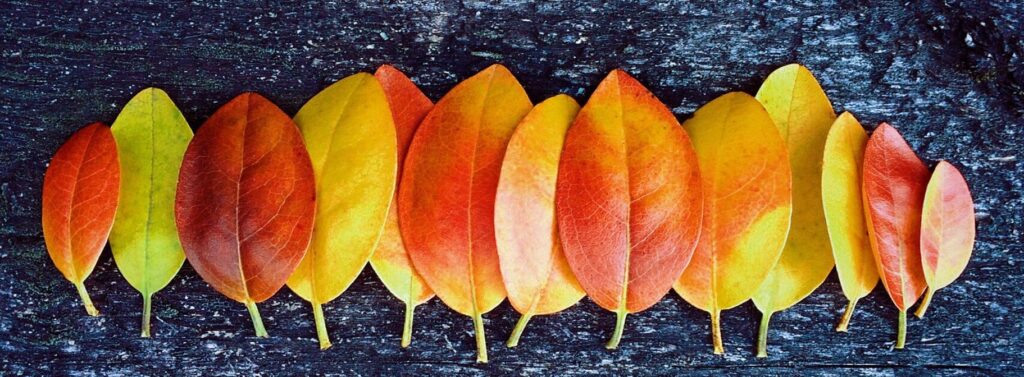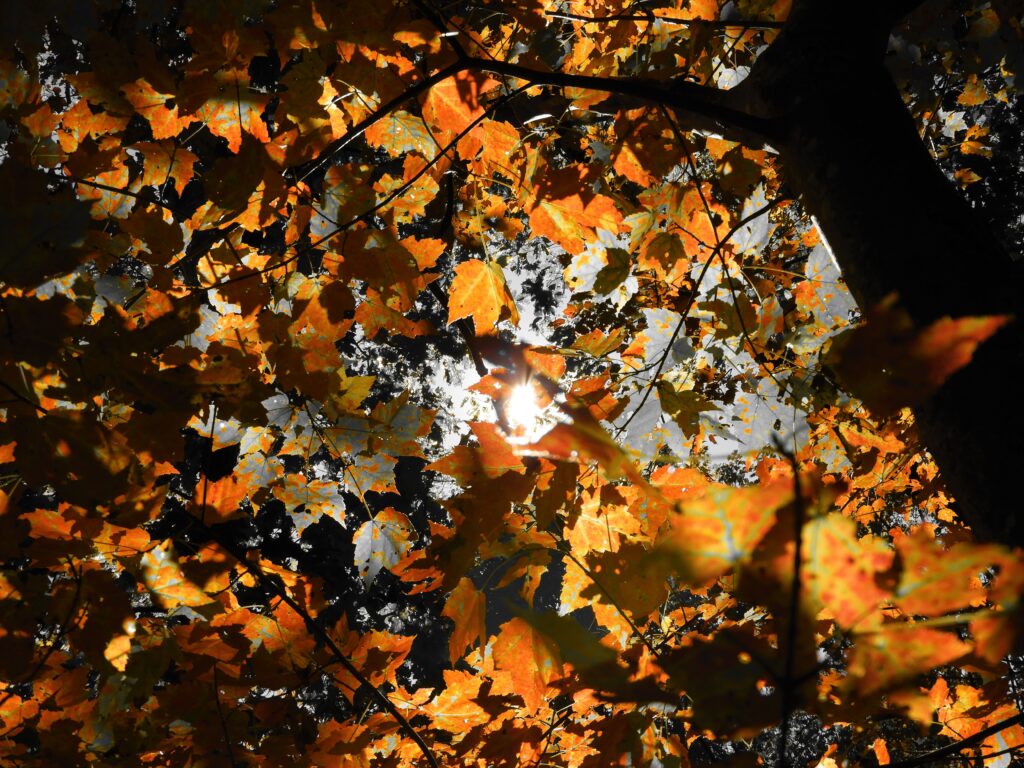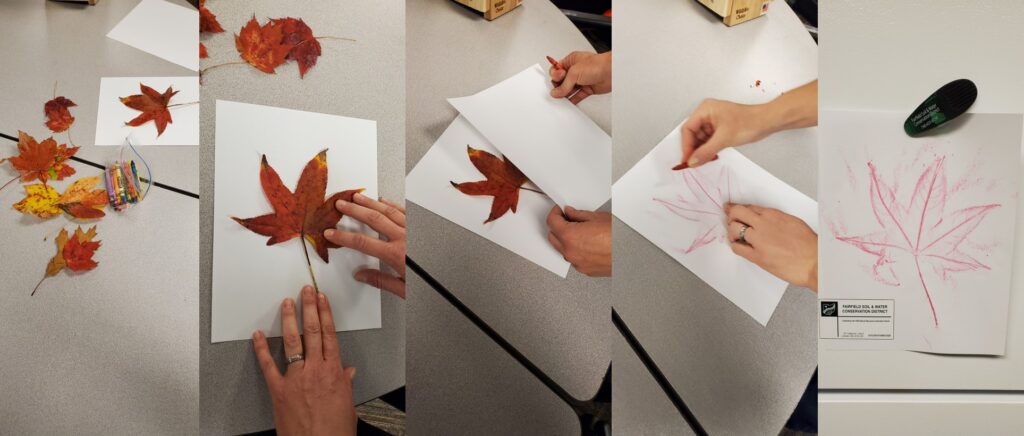4 Mysteries of Autumn Revealed
by Carrie Brown, Engineering Technician
It’s that time of the year again. The air is getting brisker, the days are getting shorter, and the leaves are changing color. Join us this week for the second post in our series on leaves as we unravel the mysteries behind this brilliant display.

1. Why does this explosion of color occur each autumn?
It’s difficult not to become entranced by the majestic display tendered by changing autumn leaves. Offering an explosion for the senses, what we are really experiencing is chemistry happing right before our eyes! Let’s take a closer look at where these colors come from.
Have you ever heard of the idiom, “showing one’s true colors”? During autumn, this is exactly what leaves are doing!
In fact, the brilliant fall colors we are now experiencing are actually embedded in the leaf throughout the entire year.

We simply don’t see these other pigments during the summer because they are overpowered by the surplus of green chlorophyll leaves produce for photosynthesis.
The shortening days of autumn trigger plants to begin shutting down their chlorophyll production, and existing chlorophyll is slowly broken down. The result of this lack of green is the exposure of many other colors! These colors come from a variety of compounds found within the leaves:

Orange
Beta-Carotene
Responsible also for the color of many fruits and vegetables, such as carrots, beta-carotene is a common pigment in most leaves year-round and assists with photosynthesis. In the fall, it gives leaves their orange hue by reflecting yellow and red light from the sun.

Red & Scarlet
Anthocyanins
Unlike beta-carotene, the production of this pigment occurs primarily during autumn. Its presence acts as a sunscreen, shielding the leaf from damage caused by the sun’s ultraviolet light. During the growing season, chlorophyll does this job.

Yellow
Flavonols
Flavonols are present in leaves all year. During the growing season, flavonols assist leaves in light absorption and energy production. Their colors aren’t revealed until chlorophyll production begins to cease in the fall. Interestingly, they also play a primary role in the coloration of many types of flowers.
While we bask in the beautiful changing colors of fall, trees are busy preparing for the approaching winter.

Because the soft plant tissue that makes up broadleaves would certainly be damaged by the cold winter temperatures, many perennial plants have adapted to lose their leaves and enter a dormant state.
Energy is removed from the leaves and the connection with the plant is slowly severed at the base of the leaf stem.
Water and nutrients no longer move in or out of the leaf, and the leaf dies and eventually falls to the ground. Here, it decomposes to a rich humus that will help to feed the plant the following year.
Nature is quite resourceful!
2. Why are some Autumns more vibrant than others?

There are many factors that influence the intensity of autumn leaf colors. Temperature, water supply, and light can all affect the duration and brilliance of fall color displays. This is why no two autumns are the same from year to year.
Generally, the most dazzling autumn displays result from warm sunny days followed by cool nights. Low temperatures in the fall that are above freezing, trigger the production of anthocyanin. This is the pigment responsible for vibrant reds and scarlets and is abundant in species such as sugar maples. Early frost decreases this red color.
Soil moisture can also have an effect. Summer droughts can result in the early onset of fall color due to stress. Oftentimes, temperatures aren’t adequately low for bright displays. Windy and rainy weather during autumn can cause leaves to fall to the ground prematurely and interrupt colorful displays.
3. Why are some trees a bit more colorful than their neighbors?
As discussed above, fall color is the result of multiple compounds. Different species of trees have varying compound makeups that can dictate which colors they display in the fall.

“Autumn is a second spring when every leaf is a flower.”
-Albert Camus
For instance, maples, sassafras, and sumac tend to produce high rates of anthocyanin, the compound responsible for that vivid red color. Anthocyanin production is triggered by sunlight, so the parts of the tree most exposed to sunshine will exhibit the brightest colors.
Forest age can also have an effect on overall color. Due to forest succession, the composition of dominant tree species can change as forests mature.
Early successional species, such as sassafras, sumac, and tulip tree, often reward viewers with brilliant colors of reds and yellows. More mature forests, especially those disturbed by fire or timber harvest, may contain more oak and hickory, offering displays of reds, browns, and yellows. Less disturbed mature forests may be dominated by shade-loving sugar maples, red maples, and beech and also offer a vibrant color presentation.
Finally, some cultivars, such as the Freeman maple ‘Autumn Blaze’ and serviceberry ‘Autumn Brilliance,’ have been selected for their bright fall colors. These beauties are most often found in home and city landscapes.
4. Why is my understory still green?
You may notice a wall of green remaining in forests beneath those beautiful fall colors.
This green understory is likely made up of non-native, invasive species such as bush honeysuckle, autumn-olive, and privet.

These shrubs make their living on extending their growing season beyond that of native species. Fall is the perfect time of year to spot these invasive species and make plans for their removal. Visit the Ohio Invasive Plant Council’s website for tips on invasive management.
BONUS: Leaf Rubbing Activity
Are you looking for a fun and colorful way to preserve memories of the brilliant display offered this autumn? Why not get out the crayons for a leaf rubbing craft! Pair this with a good tree identification field guide to add an educational component to this activity.

Join us next week for our third and final installment as we explore the benefits and challenges offered by those many falling leaves!
In the meantime, get the latest in fall color with ODNR’s Fall Color Update!
